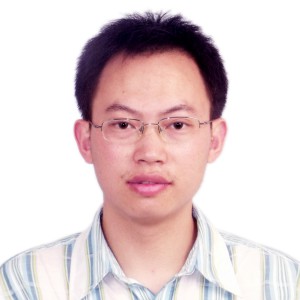

方强,博士,中国社会科学院语言研究所副研究员,中国社会科学院大学语言学系硕士研究生导师,中国语言学会语音学分会专业委员会委员,《中国语音学报》编委。
Associate Professor
中国社会科学院语言研究所
Institute of Linguisitcs, Chinese Academy of Social Sciences
研究兴趣:
机器学习、语音合成、语音识别、发音分析与建模
Research Interests
machine learning, speech synthesis, speech recognition, articulatory data analysis and modeling
教育经历:
2006/04~2009/03 日本北陆先端科学技术大学院大学信息科学系 哲学博士
2001/09~2004/06 中国社会科学院研究生院语言系 硕士
1997/09~2001/06 南京理工大学自动化系 本科
Education
2006/04~2009/03 Japan advanced institute of science and technology Ph.D
2001/09~2004/06 Graduate school of Chinese Academy of Social Sciences Master
1997/09~2001/06 Nanjin University of Science and Technology Bachelor
工作经历:
2013/05~ 中国社会科学院语言研究所 副研究员
2006/09~2013/05 中国社会科学院语言研究所 助理研究员
2009/12~2010/05 日本北陆先端科学技术大学院大学 博士后研究员
2004/07~2006/08 中国社会科学院语言研究所 研究实习员
Occupational experience
2013/05~ Institute of linguistics, CASS Associate professor
2006/09~2013/05 Institute of linguistics, CASS Assistant professor
2009/12~2010/05 Japan advanced institute of science and technology Rsearch fellow
2004/07~2006/09 Institute of linguistics, CASS Reseach assistant
Book
Fang Q., Dang J., “Physiological Articulatory Model for InvestigatingSpeech Production: Modeling and Control”, VDM Verlag Dr. Müller,2010
Journal papers
1. Fang, Q., Fujita, S., and Dang, J. “Investigation of functions of tongue muscles for model control”, Chinese Journal of Phonetics, 2, pp.34-42, 2009
2. Fang, Q., Fujita, S., Lu, X., and Dang, J., “A model-based investigation on activation of the tongue muscles in vowel production”, Journal of Acoustic Science & Technology, vol.30, no.4, pp.277-287, 2009.
3. Fang Qiang, Akikazu Nishikido, Jianwu Dang, “Feedforward Control of a 3D Physiological Articulatory Model for Vowel Production”, TSINGHUA SCIENCE AND TECHNOLOGY, Vol.14, No.5. , 2009
4. Kazuya Fujii, Qiang Fang,Jianwu Dang, “Investigation of Auditory-Guided Speech production while learning Unfamiliar Speech Sound”, Journal of Signal Processing, Vol.15, No.4, p287-290, 2011
5. Fang, Q., Dang, J., “Estimation of muscle activation patterns based on a 3D physiological articulatory model for vowel production”, Chinese Journal of Phonetics, 3, p107-109, 2012
6. Wei J., Liu J., Fang Q., et al. “A novel method for constructing 3D geometric articulatory models”, Journal of signal processing systems, (in press)
7. Li J., Xia R., Fang Q., et al. “Effect of the division between early and late reflections
on intelligibility of ideal binary-masked speech”, J. Acoust. Soc. Am. 137 (5), 2801-2810, 2015
Conference papers
1. Fang, Q., Nishikido, A., and Dang, J. ”Feedforward control of a 3D physiological articulatory model for vowel production”, NCMMCS2009, 2009
2. Qiang Fang,AkikazuNishikido, Jianwu Dang, Aijun Li “Feedforward Control of A 3D Physiological Articulatory Model for Vowel Production,” InterSpeech2009, 52-55, Brighton, UK, 2009
3. Fang, Q.,Nishikido, A., and Dang, J. (2009, 2) “Forward control of a 3D physiological articulatory model for the investigation of speech production” International symposium on biomechanical and physiological modeling and speech science, Kanazawa, II, 72-77, 2009
4. Fang, Q., Nishikido, A., Dang, J., and Ho, T. B., “Feedforward control of a 3D physiological articulatory model for the investigation of speech production,” Proc. NCSP09, 169-172, Hawaii, USA, 2009
5. Xiyu Wu, Jianwu Dang, Qiang Fang, “Investigation of Muscle Activation in Speech Production Based on an Articulatory Model”, ISCSLP2010, 2010
6. Zheng, L., Fang, Q., et al. “Impact of tone on Articulation in standard Chinese”, NCSP2011, 2011
7. Kazuya Fujii, Qiang Fang, Jianwu Dang, “Investigation of Auditory-Guided Speech Production during Learning of New Speech Sound”, NCSP2011, Best paper Award, 2011
8. Song WANG, Jianguo WEI, Shen LIU, Qiang FANG, Jianwu DANG,Reconstruction of Vocal Tract based on Multi-source Image Information, ISCSLP 2012 (EI).
9. Chan SONG, Jianguo WEI, Qiang FANG, Wenhuan LU, Shen LIU, Yuguang WANG and Jianwu DANG,Tongue Shape Synthesis based on Active Shape Model, ISCSLP 2012 (EI).
10. Mengxue CAO, Aijun LI, Qiang FANG, Jianguo WEI and Chan SONG, Acoustic and Articulatory Analysis on Japanese Vowels in Emotional Speech, ISCSLP 2012, 2012 (Best student paper award)
11. Shen Liu, Jianguo Wei, Bo Feng, Wenhuan Lu, Bruce Denby, Qiang Fang and Jianwu Dang, An Anisotropic Diffusion Filter for Reducing Speckle Noise of Ultrasound Images Based on Separability”, APSIPA2012, 2012
12. Chen X., Dang J., Yan H., Fang Q., et al. “A Neural Understanding of Speech Motor Learning”, APSIPA2013
13. Fang Q., Wei J., Hu F., et al. “Estimating the position of mistracked coil of EMA Data using GMM--based methods”, APSIPA2013
14. Fang Q., Wei J., Hu F., “Reconstruction of mistracked articulatory trajectories”, Interspeech2014
15. Fang Q., Liu J., Chan S., Wei J., et al. “A Novel 3D Geometric Articulatory Model”, ISCSLP2014
Awards
Fang Q.,Physiological Articulatory Model for Investigating Speech Production: Modeling and Control,社科院语言所,科研成果二等奖,2012